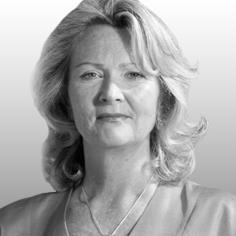Visiting Qatar last month, I was struck by the segregation between rich and poor

Last month, I made my first trip to Doha - the wealthiest country per capita in the world. I took part in the ‘Old Doha Prize’ organised by the British Council and Qatar Museums Authority on behalf of the Qatar / UK 2013 Year of Culture. Our week-long design charette included eight UK architects who were paired with eight Doha architects to come up with new urban design ideas to develop the old historic quarter next to the $5.5bn Msheireb development, which is currently under way and slated for completed in 2016. While this may be an exemplary project, what about those who build the rest of the fast developing city preparing for the 2022 World Cup?
With so much in the news about ‘exploited workers’, I was conscious of the plight of the workers around us. I spoke to Filipino lads who were concerned about difficulties of lack of contact from their families following the devastating typhoon while the Nepalese, Nigerian and Bangladeshi workers were happy to pose for a photograph. There were dozens of workers standing in national groups and, at 6pm as it was getting dark, the busloads of workers were transported back to their camps, outside of the city, out of public view. It was the segregation and the huge social divide of rich and poor that struck me most.
At 6pm as it was getting dark, the busloads of workers were transported back to their camps, outside of the city, out of public view
Back at the charette design table with the architects, the winning team addressed the issue by looking at the concept of a temporary portable city for workers that could be moved from site to site or city to city. Another looked at the long-term integration of skilled workers within the new built city using skills and crafts aimed at tourism. The statistics are staggering when you consider a mobile workforce of one million workers.
Currently there are some tragic stories in the media. The GMB union is supporting the International Trade Union Confederation (ITUC) campaign to improve workers’ rights in Qatar, which says guest workers from different parts of Asia such as Nepal are “mercilessly exploited, face death and injury and have no protection in law”.
As Qatar steps up it’s construction sites and grand plans for offices, hotels and tourist attractions with a vision up to and beyond 2022, world media focus is on them right now. They must take more interest in the welfare and safety of their workers and improve and enforce the law as advised by ITUC and Amnesty International or they may find that they are boycotted for neglect - no longer acceptable on our building sites today.
The United Nations’ ‘Global Compact’ asks companies to embrace 10 universal principles and to partner with them. It has grown to become a critical platform for the UN to engage effectively with enlightened global business. , “it is imperative for the design profession to offer a unified, considerate position on the ethical issues faced by our industry today” and we can start by ensuring that the projects we work on have workers rights in line with the Global Compact and with Amnesty International’s recent recommendations. Otherwise, we should not work on them. Contractors and middlemen, often in the workers’ countries of origin, must be made to change their ways by law. And human rights impact assessments should be part of every project implementation.
I believe that now is the time to face this challenge with real action. The richest city in the world can be encouraged to bring in and enforce new laws to improve workers conditions. Only then should we give them the support they need to make a success of their future city and one we can all be proud to have worked on.
Angela Brady is director of Brady Mallalieu Architects and was RIBA president from September 2011-2013



























No comments yet